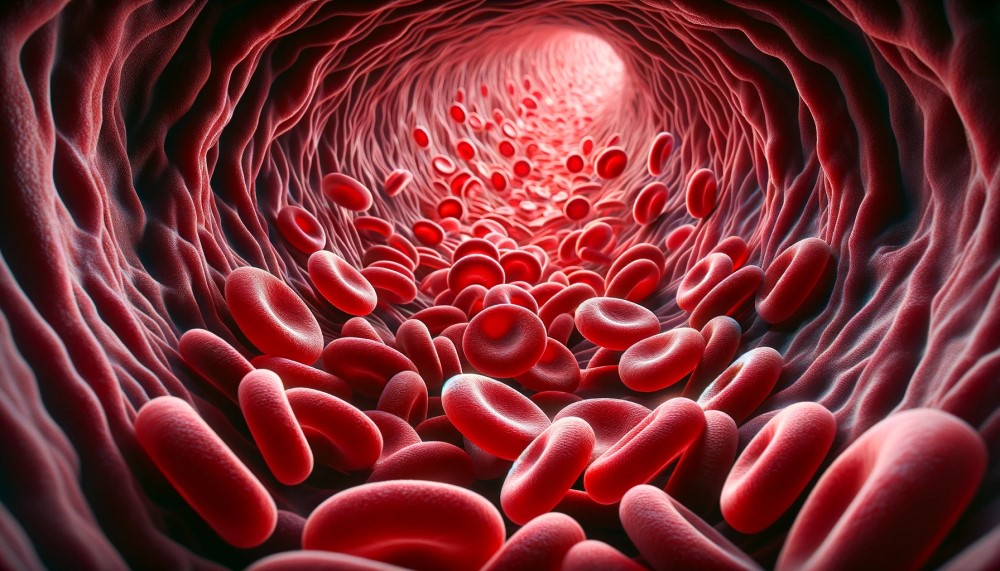What Is the Legal Blood Alcohol Limit in the UK?
What Is the Legal Blood Alcohol Limit in the UK?
The legal blood alcohol limit in the United Kingdom is a critical metric, pivotal in the enforcement of laws pertaining to drink-driving. This article endeavors to provide a comprehensive overview of the legal thresholds and their implications for drivers across the UK.
Legal Blood Alcohol Limit in the UK

In the United Kingdom, the legal limit for blood alcohol concentration (BAC) is stringently defined. The limits are as follows:
- In England, Wales, and Northern Ireland: 80 milligrams of alcohol per 100 millilitres of blood (0.08% BAC), 35 micrograms per 100 millilitres of breath, or 107 milligrams per 100 millilitres of urine.
- In Scotland: 50 milligrams of alcohol per 100 millilitres of blood (0.05% BAC), 22 micrograms of alcohol per 100 millilitres of breath, or 67 milligrams per 100 millilitres of urine.
These limits underscore the UK’s commitment to road safety, reflecting a zero-tolerance stance towards impaired driving.
Implications for Drivers

- Legal Consequences: Surpassing these limits can lead to severe legal repercussions, including driving bans, fines, or even imprisonment.
- Safety Risks: Driving with a BAC above the legal limit significantly increases the risk of accidents, endangering both the driver and others on the road.
- Measurement and Testing: Law enforcement agencies utilise breathalysers and other testing methods to ascertain a driver’s BAC, ensuring compliance with these legal standards.
The legal blood alcohol limits in the UK are instituted to safeguard the well-being of all road users. Adherence to these limits is not only a legal obligation but also a moral imperative, pivotal in the endeavour to maintain road safety.
As responsible citizens, it is incumbent upon drivers to remain informed and compliant with these regulations.
What is Blood Alcohol Content ?
Blood Alcohol Content (BAC) is the term used to describe the level of alcohol found in an individual’s bloodstream. It is quantified as a percentage by weight. Several factors, including the quantity of alcohol consumed, body weight, metabolism, and the rate at which alcohol is absorbed, influence one’s BAC.
In the United Kingdom, the legal limit for blood alcohol concentration in drivers is 80 milligrams of alcohol per 100 milliliters of blood or 35 micrograms of alcohol per 100 milliliters of breath. It is crucial to understand that BAC significantly affects a person’s ability to drive safely, as alcohol hampers judgment, coordination, and reaction time.
Legal Blood Alcohol Limit in the UK

Photo Credits: www.Makwanas.co.uk by Donald Rodriguez
Limit for Drivers
The legal blood alcohol limit for drivers in the UK is 80 milligrams of alcohol per 100 milliliters of blood, 35 micrograms of alcohol in 100 milliliters of breath, or 107 milligrams of alcohol per 100 milliliters of urine.
Exceeding these limits can result in penalties such as fines, driving bans, and even criminal charges. It is important to note that there is a lower alcohol limit for novice drivers and professional drivers, which is 20 milligrams of alcohol per 100 milliliters of blood.
To avoid any risk of impaired driving and to ensure road safety, it is best to refrain from consuming alcohol before driving and to always have a designated driver or utilise public transport when needed.
Limit for Novice Drivers and Professional Drivers
In the UK, novice drivers are held to a standard of 20 milligrams per 100 milliliters of blood (equivalent to 0.02% BAC), while professional drivers adhere to a limit of 50 milligrams per 100 milliliters of blood (equivalent to 0.05% BAC).
How is the Blood Alcohol Limit Enforced?

Photo Credits: www.makwanas.co.uk by Bryan Rivera
Breathalyser Tests
Breathalyser Tests are widely utilized to measure blood alcohol concentration (BAC) levels. Below is a step-by-step procedure that explains how these tests are carried out:
- Motorists are requested to blow into a handheld device referred to as a breathalyser.
- The amount of alcohol present in the exhaled breath is measured by the breathalyser, which directly corresponds to the driver’s BAC level.
- A result is displayed on the breathalyser, indicating whether the driver’s BAC is in compliance with the legal limit.
- If the BAC level surpasses the legal limit, additional measures such as a field impairment test or blood test may be undertaken.
- Breathalyser Tests are efficient and not intrusive, providing law enforcement with a quick means of determining levels of intoxication.
- It is crucial for individuals to comprehend the legal BAC limit in their jurisdiction and avoid driving if they have consumed alcohol.
Blood Tests
When it comes to enforcing the legal blood alcohol limit, blood tests play a crucial role. In the UK, if there is suspicion of alcohol impairment while driving, authorities have the authority to conduct a blood test.
This test is aimed at measuring the precise amount of alcohol present in an individual’s system. Typically, the blood sample is collected either at a police station or under the supervision of a qualified medical professional.
What makes blood tests highly reliable and accurate is their ability to directly measure the alcohol content in the bloodstream. Unlike breathalyser tests, blood tests provide more precise measurements, especially in situations where breathalyser tests are not practicable.
With their accuracy and reliability, blood tests are frequently utilised when a breathalyser test is not feasible or when more precise measurements are required.
Penalties for Exceeding the Legal Blood Alcohol Limit
The gravity of the punishment is contingent upon the level of alcohol content detected in the driver’s system. For instance, individuals with higher alcohol levels may encounter longer periods of disqualification, more substantial fines, and potentially even imprisonment.
It is noteworthy to mention that surpassing the blood alcohol limit not only exposes you to penalties but may also result in criminal charges and the possibility of causing death due to reckless driving.
Driving Penalties
- Driving penalties for exceeding the legal blood alcohol limit in the UK can result in severe consequences.
- These consequences include fines, suspension of the driver’s licence, and even imprisonment.
- For a first offence, drivers may be subjected to a minimum 12-month driving ban, a fine of up to £5,000, and a maximum of 6 months in prison.
- Repeat offenders can face extended driving bans, larger fines, and longer prison sentences.
Criminal Offences
Criminal offences related to blood alcohol limit in the UK can result in severe penalties. These criminal offences encompass driving over the legal alcohol limit, causing death by careless driving under the influence, and refusing to provide a specimen.
Offenders may be subject to various driving penalties, including fines, driving bans, and even imprisonment. The legal blood alcohol limit for drivers in the UK is 80 milligrams of alcohol per 100 milliliters of blood, or 35 micrograms of alcohol per 100 milliliters of breath.
It is crucial to comprehend and adhere to these limits in order to avoid facing criminal charges and ensure the safety of the road.
Factors Affecting Blood Alcohol Concentration

Weight and Body Composition
Weight and body composition play a crucial role in determining blood alcohol concentration (BAC) and its effects.
- Weight: Heavier individuals tend to have a lower BAC because alcohol is distributed over a larger body mass.
- Body composition: Higher body fat leads to a higher BAC as alcohol is less soluble in fat tissues.
- Muscle mass: Muscle tissue contains more water, which helps in diluting alcohol. As a result, individuals with more muscle mass may have a lower BAC.
- Metabolism: Metabolic rate affects how quickly alcohol is processed and eliminated from the body. People with faster metabolisms may metabolize alcohol more efficiently.
- Hydration: Proper hydration helps dilute alcohol and can lower BAC levels.
Understanding weight and body composition is vital when considering the effects of alcohol and making responsible decisions about drinking and driving.
Gender
When it comes to the legal blood alcohol limit in the UK, gender plays a significant role. Women, due to their higher percentage of body fat and lower amount of water in their bodies, typically have a lower tolerance for alcohol compared to men.
Consequently, women tend to reach a higher blood alcohol concentration (BAC) faster than men when consuming the same amount of alcohol. It is crucial for women to be aware of this gender difference and drink responsibly to avoid exceeding the legal limit and the potential consequences that accompany it.
Metabolism Rate
The metabolism rate greatly influences blood alcohol concentration (BAC). Each individual’s metabolic rate is unique, resulting in variations in how rapidly alcohol is metabolized and expelled from the body.
A higher metabolism leads to a more rapid decline in BAC. Age, genetics, liver health, and medication can all impact metabolism rate. Those with an elevated metabolism may have a greater tolerance for alcohol and experience reduced impairment compared to those with a slower metabolism.
It is vital to be aware of your own metabolism rate when consuming alcohol, in order to make responsible choices and avoid surpassing legal limits.
Food Consumption
Different food consumption practices have varying effects on Blood Alcohol Content (BAC) levels. Consuming alcohol on an empty stomach accelerates BAC levels more rapidly, while eating a meal before drinking alcohol slows down alcohol absorption, resulting in lower BAC levels.
Additionally, consuming greasy or fatty foods also contributes to slowing down alcohol absorption, leading to lower BAC levels. Moreover, drinking alcohol while eating slightly slows down alcohol absorption, resulting in slightly lower BAC levels.
Understanding how food consumption can affect BAC levels is essential for making responsible decisions regarding alcohol consumption and ensuring personal safety.
Thank you for reading this post, don't forget to subscribe!
Notice: Informational Content Disclaimer
The content provided on this website, including articles, blog posts, and other informational materials, is intended for general informational purposes only. It is not intended as, and should not be considered, legal advice.
Visitors to this website should be aware that the information presented here is not a substitute for seeking legal advice from a qualified solicitor or legal professional. Each individual's legal situation is unique, and the information provided may not be applicable to specific circumstances.
If you require legal advice or have specific legal questions, we encourage you to contact us directly. Our experienced team of solicitors is here to assist you with your legal needs and provide tailored advice to address your concerns.
Please be advised that any communication through this website, including the use of contact forms or email, does not create a solicitor-client relationship. Confidential or time-sensitive information should not be sent through this website. To establish a solicitor-client relationship and discuss your legal matters in detail, please contact us for a consultation.
We strive to provide accurate and up-to-date information, but we make no representations or warranties regarding the accuracy, completeness, or suitability of the information contained on this website. We shall not be liable for any reliance placed on the information provided herein.
Thank you for visiting our website. We look forward to the opportunity to assist you with your legal needs.




